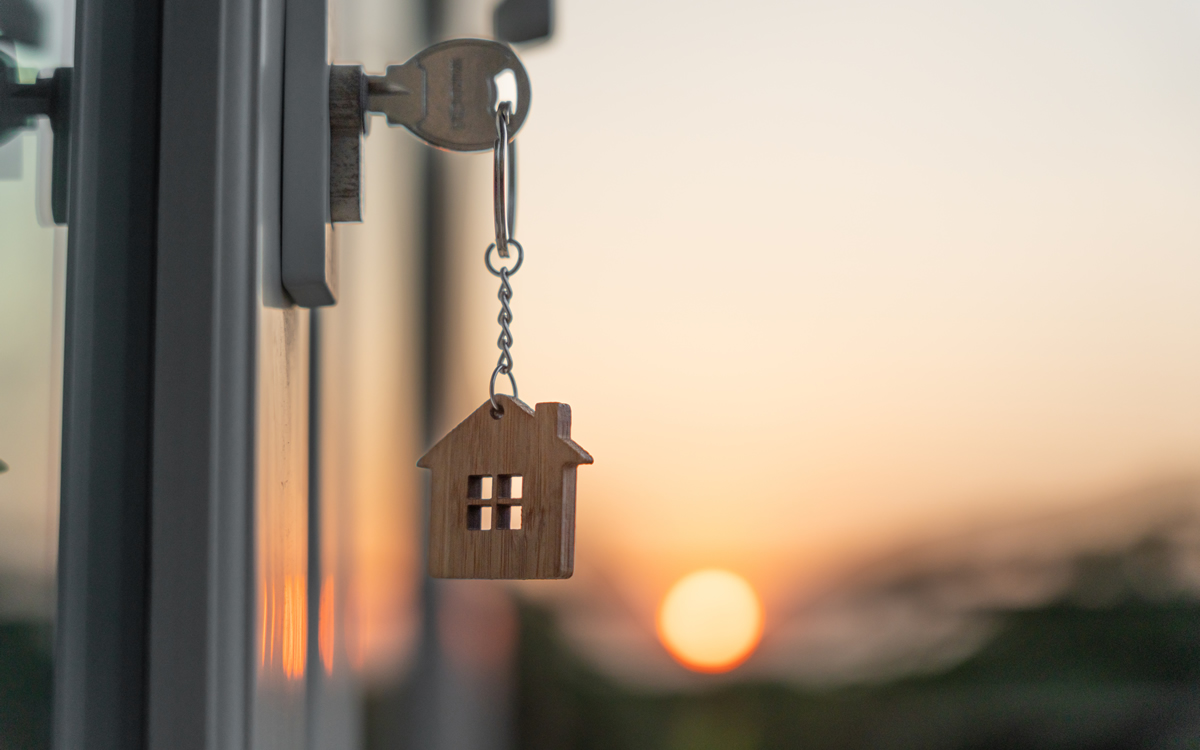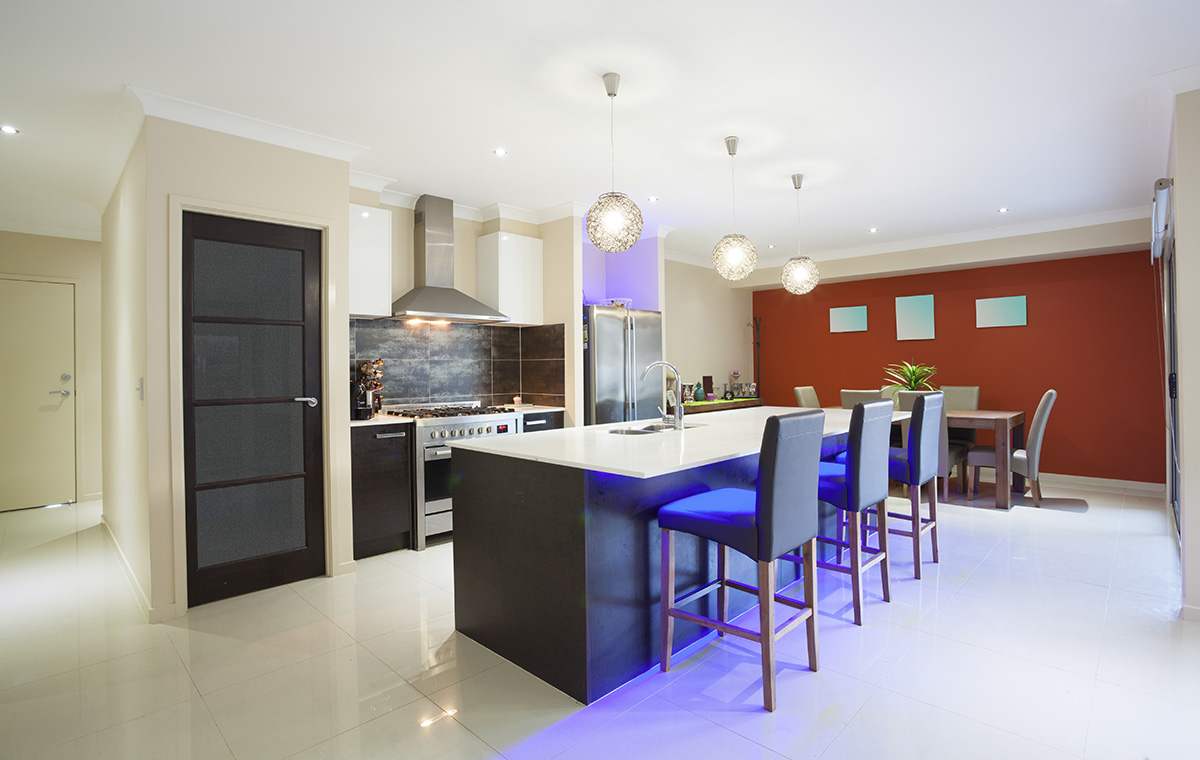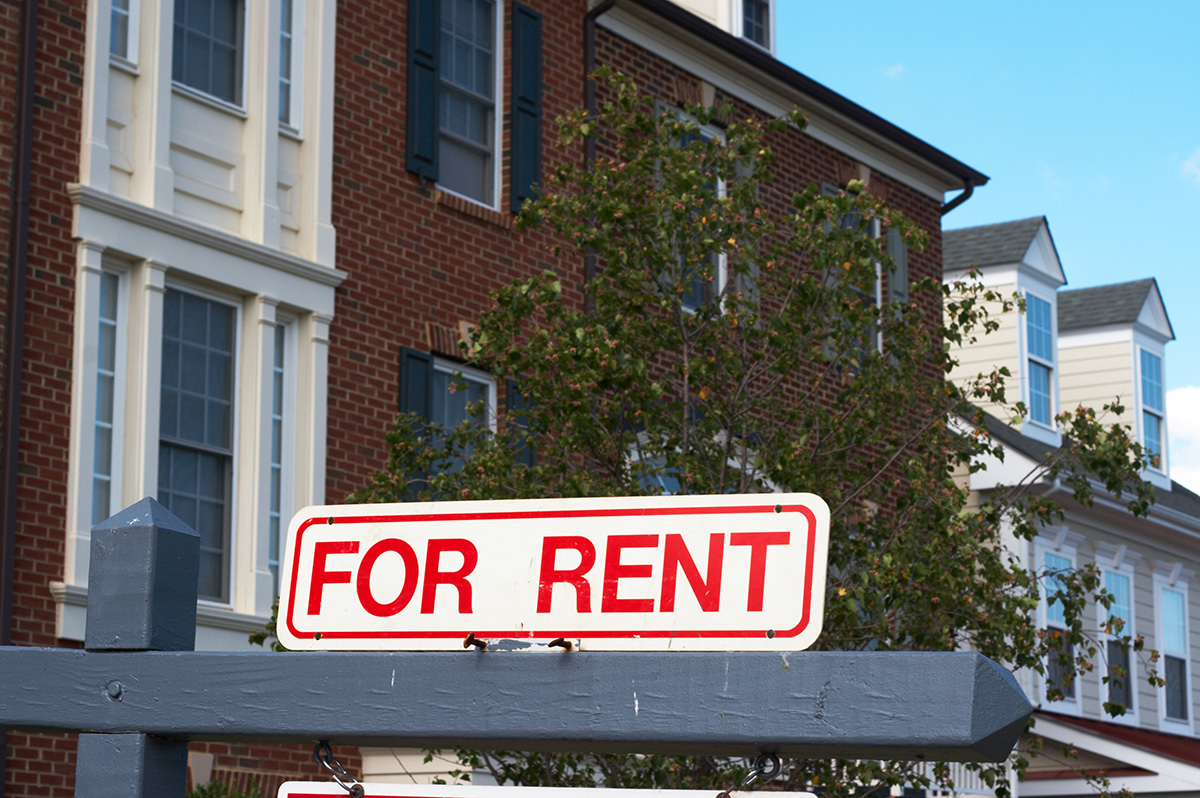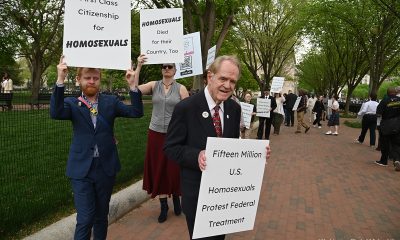Real Estate
Thinking of renting your place short-term in D.C.?
Here are some key factors to consider

Summer is coming, and in D.C., many homeowners turn their attention to generating revenue from their primary D.C. residence while they are away for the summer. Due to the way some D.C. employers enable staff to work remotely and permit longer vacation schedules in the summer months, many owners can find extra income annually by considering short-term rentals. Here are a few key things you should know before getting started.
In 2021 the D.C. Department of Consumer and Regulatory Affairs announced it was “finally ready to start implementing and enforcing ” a law passed three years earlier for short-term rentals (AirBnB, VRBO, etc.). According to DCist, the agency started accepting license applications for short-term rentals on Jan. 10 last year and started enforcing the law’s provisions in April 2022.
According to Martin Austermuhle’s “D.C. to Start Restricting Airbnb and Other Short-Term Rentals” he wrote for DCist, “The law applies specifically to short-term rentals, those lasting less than 30 days at a time. Under the new law, any D.C. homeowner who wants to rent out a bedroom, basement, or entire home on Airbnb or any other platform has to get a short-term rental license from DCRA. (The two-year license costs $104.50.)”
Charlotte Perry, owner of LUXbnb, a property manager specializing in furnished short-term rentals in D.C. for more than 15 years, is a trusted partner to Columbia Property Management. She shared her expertise and guidance with me on short-term rentals. Her business, LUXbnb, punches above its weight in the D.C. area, bringing owners greater opportunity to realize the gains they hope to make. She brings deep insight into what you can expect if you were to go down this path with your property.
Companies like hers function like any other property manager might. LUXbnb collects the rents, “hotel” taxes, security deposits, departure cleaning, and any other applicable feeds on behalf of the owner. They manage turnover between guests including cleaning and any needed repairs. And at the end of each month, they release the rental income earned less the management fee and any repair costs or new purchases.
In the District, if the owner resides at the house during the rental, s/he can host short-term renters all year long with no consequence. However, if, like many of Charlotte’s clients, the owner is renting their property while they are gone during the summer or while on assignment for, say, the World Bank, those owners can only do so for a total of 90 days for the entire year. Owners like these will want to consider that under the new law, you cannot rent out your second home as an Airbnb/VRBO short term rental, and so knowing the regulations can save you a lot of headaches.
Registration Requirements
Did you know all short-term rental hosts in D.C. are required to obtain a Short-term Rental License?
According to the Office of Short-term Rental Licensing, “In order to operate a short-term or vacation rental in the District, the property must be owned by an individual, and serve as a homeowner’s primary residence – with the owner being eligible to receive the Homestead Tax Deduction. ”
To be eligible for such a license the home must be your primary residence and owner-occupied. You will need to provide DC’s Office of Short-term Rental Licensing (DLCP) the following:
Specify whether you currently have a Homestead Exemption on the property.
Proof of your liability insurance with a minimum of $250,000 in coverage. (See below for more details).
A Certificate of Clean Hands issued within the last 30 days in the property owners name must be obtained from the Office of Tax and Revenue.
The owner, or “host,” must attest to the habitability of the property.
If the rental is a co-op, condo, or if the property is in a community where there is a homeowners’ association, the owner must attest that the bylaws, house rules, or other governing documents of the homeowner/condo/ cooperative governing board or association allow short-term and/or vacation rentals, do not prohibit owners from operating short-term rentals and/or vacation rentals, or that they have received written permission from the association to operate a short-term and/or vacation rental at the address.
Once you have successfully registered with DLCP, you will be provided with a license. You will then upload this Short-term Rental License number into your property profile in both Airbnb and VRBO. Those sites will then provide bookings for “under-31-nights” on your property.
By working with an experienced rental property manager specializing in furnished temporary stays, you can ensure that you’re operating your short-term rental legally and safely. Better yet, you can avoid any penalties or fines that could result from non-compliance with District regulations.
Some factors you might want to consider on your journey to short-term rental success:
Cleaning Fee and Preparation Service
Perhaps you’ll want to have a cleaning service at-the-ready in case your renters have a slight disaster while they’re there. Or maybe you’ll want a service to clean prior to arrivals and directly after departures, so you can quickly turnaround the property for further rental.
Pets
Do you want pets in your home while you’re away? If so, you might want to add in an automatic post-stay pet cleaning fee to cover the expense of hair and other less pleasant odor removal.
Insurance/Accidental Damage
Charlotte’s company takes out a $3,000 accidental damage insurance policy on every stay in lieu of holding a damage deposit. The cost to the guest is $39 per rental. This insurance is a safe-guard for the guest, property owner and her company, of course. This insurance policy “allows for the equitable transfer of the risk of a loss, from one entity to another – in this case the insurance company. It is a simple way for all parties involved to mitigate risk, and most importantly, provides peace-of-mind.”
Liability Insurance
As you saw above, the District requires all owners to possess a liability insurance policy with a minimum of $250,000 in coverage to gain a license in the District. A variety of companies can help, according to the Motley Fool’s “The Ascent” newsletter, but some do this faster and better than others. And they even recommend ones that are best for Airbnb and VRBO rental owners. The Ascent’s best homeowners insurance for short-term rentals include the following:
Allstate Insurance: Best for possessing a large network of agents
Proper Insurance: Best for Airbnb and VRBO owners
Nationwide Insurance : Best for bundling policies
Farmers Insurance : Best for vacation rentals
Steadily Insurance: Best for getting coverage quickly
Safely Insurance: Best for fast claims processing
Should you have further questions or seek to explore the option of short or mid-term rentals, do not hesitate to contact Charlotte Perry directly at 202-341-8799 or [email protected].
Scott Bloom is senior property manager and owner of Columbia Property Management.
For more information and resources, visit ColumbiaPM.com.
Real Estate
Navigating DMV real estate market during political unrest
Reductions in federal employment have introduced uncertainties

The Washington, D.C.-Maryland-Virginia (DMV) region has long been recognized for its robust housing market, underpinned by the presence of the federal government and a diverse economic landscape. Recent massive reductions in federal employment have introduced uncertainties, yet the area continues to offer compelling reasons for prospective homebuyers, particularly within diverse communities.
While the federal government has traditionally been a significant employer in the DMV, the region has proactively diversified its economic base. Sectors such as technology, professional services, education, and healthcare have expanded, mitigating the impact of federal job cuts. This diversification fosters some economic resilience, which offers our area a semblance of protection against the impending unknowns that we currently face. Nothing can shield real estate entirely; however, our area tends to survive these types of changes better than other parts of the country.
Despite concerns over federal layoffs, the DMV housing market has demonstrated notable stability. Analyses indicate that the number of active listings, sold properties, and median sales prices have remained steady on a year-over-year basis. This steadiness suggests that the market is adapting to changes without significant disruption.
Furthermore, while there has been a slight increase in home listings, this trend aligns with typical seasonal variations and does not solely reflect federal employment changes. The luxury property segment, in particular, continues to thrive, indicating sustained interest and investment in the region.
The DMV region is renowned for its cultural and demographic diversity, with areas like Montgomery County, Md., being among the most ethnically diverse in the nation. This inclusivity extends to various communities, including LGBTQ individuals, fostering a welcoming environment that enhances the area’s appeal. Even though the current administration is fostering anti-diversity ideology, I remain confident that our LGBTQ community will continue to thrive even as these destructive forces work against us.
Local governments within the DMV have implemented policies aimed at promoting affordable housing and preventing displacement, particularly in the wake of economic shifts. Initiatives like the Douglass Community Land Trust in Washington, D.C., exemplify efforts to maintain housing affordability and support community stability.
Additionally, jurisdictions such as Montgomery County have longstanding Moderately Priced Dwelling Unit (MPDU) programs that require developers to include affordable housing in new residential developments. These policies contribute to socioeconomically mixed neighborhoods, benefiting diverse populations.
Despite Elon Musk’s brandishing of a chainsaw to the federal workforce, our real estate market continues to thrive. The DMV region maintains its appeal. Economic diversification, market stability, commitment to diversity and inclusion, and progressive housing policies collectively contribute to an environment that supports and attracts diverse communities. Prospective homebuyers can find reassurance in the region’s resilience and ongoing efforts to foster an inclusive and vibrant community. These are only a few among the many reasons to have a positive outlook while considering real estate options in our area.
It is important to consider working with brokerages, brokers, agents, lenders and title companies who align with our community and our objectives. Not all LGBTQ agents work for brokerages that support or understand the needs of the members of our community. Do your research and find out who has donated money to what political causes. Now more than ever we must support members of our community to protect our way of life and our very existence.
Stacey Williams-Zeiger is president/principal broker of Zeiger Realty Inc. Reach her at [email protected].

Whether you are upgrading parts of your current home to prepare it for sale or enhancing the home you just purchased, kitchens and bathrooms are still at the top of the renovation list.
Kitchen renovations have always embraced a blend of functionality, personalization, and aesthetic appeal; however, homeowners are currently moving away from sterile, uniform designs, opting instead for spaces that reflect warmth, character, and individual style. Here are some of the most prominent trends shaping kitchen renovations this year.
Warm and Earthy Tones
The dominance of all-white kitchens is waning as homeowners gravitate toward warmer, earth-toned palettes. Shades like sage green, navy blue, and natural wood finishes are becoming popular choices for cabinetry, infusing kitchens with a cozy and inviting atmosphere. This shift reflects a desire for spaces that feel more personalized and less clinical. Flat panel and Shaker cabinets continue to be popular options.
Integration of Organic Modernism
The “modern organic” style is gaining traction, characterized by using natural materials, neutral color palettes, and serene layouts. Incorporating elements like soapstone countertops, Venetian plaster walls, slate floors, and greenery not only enhances aesthetic appeal but can also increase home values significantly. Fully outfitted outdoor kitchens further contribute to this trend.
Innovative Kitchen Island Designs
Kitchen islands continue to be central features, with designs evolving to incorporate textures, wood and tile cladding, multifunctional elements, and bold colors and materials. Integrated seating areas, waterfall countertops, and the use of monolithic stone or stacked marble are becoming increasingly popular. These islands not only serve as functional workspaces but also as striking focal points within the kitchen.
Concealed Kitchens for a Sleek Look
The concept of concealed kitchens is on the rise, emphasizing built-in appliances, flush cabinetry, and appliance garages to maintain a clutter-free environment. This design approach fosters a minimalist aesthetic, creating a seamless flow between the kitchen and adjacent living areas, particularly in open-concept homes.
Personalized Cabinetry and Storage Solutions
Customization is key in modern kitchen designs, with homeowners seeking tailored storage solutions that cater to their specific needs. Features like hidden storage compartments, integrated lighting, and unique hardware choices are being favored over generic, cookie-cutter options. This trend underscores a move toward kitchens that are both functional and reflective of personal style.
Revival of Traditional Styles with Modern Twists
Traditional kitchen styles are making a comeback, with a contemporary twist. Elements such as expanded backsplash coverage, classic tile shapes and patterns, use of mixed metals, and specialty appliances are being integrated into modern kitchens, blending the charm of the past with the conveniences of the present. Custom range hoods, coffee bars and microwave drawers are increasingly added to renovation projects. This fusion creates spaces that are both timeless and equipped for modern living.
Sustainable and Natural Materials
Sustainability remains a priority, with an increased use of eco-friendly materials like reclaimed wood, recycled metals and glass, and energy-efficient appliances. This not only reduces environmental impact but also introduces unique texture and shimmer into kitchen designs, adding depth and character to the space.
Use of Bold Colors and Accents
Homeowners are becoming more adventurous with color and texture, incorporating vibrant hues and tactile materials into their kitchen designs. Features like colorful window trims, two-tone cabinets, and the use of wallpaper and feature walls add visual interest and a personalized touch to the space. In addition to the familiar white, major appliances are now shown in matte black, navy, and jewel tones of red, green, and blue. There are even vinyl wraps and magnet covers that allow for more creativity and individualization with appliances.
Integration of Smart Technology
The incorporation of smart technology continues to grow, with appliances featuring automated cooking functions, sensor reheating, and control locks becoming more prevalent. Induction stoves are entering the mix. Charging stations and touch-activated cabinet doors and faucets are also popular. LED lighting lasts longer and prevents you from having to climb a ladder to change lightbulbs on a high or vaulted ceiling. These advancements enhance convenience and efficiency, aligning with the modern homeowner’s desire for a kitchen that supports a tech-savvy and busy lifestyle.
Multifunctional Spaces
Kitchens are increasingly being designed as multifunctional spaces that accommodate cooking, dining, working, and socializing. This has led to the inclusion of features like integrated seating, versatile lighting, and adaptable layouts that can easily transition between different uses, reflecting the evolving role of the kitchen in contemporary homes. Still, don’t be surprised to see a resurgence of self-contained kitchens with real walls.
So, whether the kitchen you want is sleek and modern, earthy and organic, or traditional and elegant, there will always be fresh new styles, ideas, innovations and classic touches that cater to your lifestyle.
Valerie M. Blake is a licensed Associate Broker in D.C., Maryland, and Virginia with RLAH @properties. Call or text her at 202-246-8602, email her via DCHomeQuest.com, or follow her on Facebook at TheRealst8ofAffairs.

Spring is the season of renewal—a time to refresh, declutter, and make space for better things. But spring cleaning isn’t just for your home. Whether you’re a landlord or a tenant, it’s the perfect opportunity to reassess your rental relationship.
Are landlords feeling disconnected from tenants? Are tenants feeling like their landlord is absent? Before considering drastic steps like moving, both sides can take positive, proactive measures to improve communication, set clearer expectations, and foster a mutually beneficial relationship. This article encourages both landlords and tenants to take stock of their rental experiences and explore ways to clean up misunderstandings before they become deal-breakers.
1. Dust Off the Lease: Revisit Foundation of Your Relationship
The lease is the roadmap of your rental journey. Are both sides following it?
For Landlords:
• Review Key Terms: Ensure you fully understand your obligations under the lease and DC law, including maintaining a habitable unit, providing essential services like heat and water, and ensuring repairs are done for safety compliance.
• Clarify Expectations: Is there a disconnect between your expectations per the lease and what you are observing at the rental? Remind tenants of areas that are covered in the lease in a proactive and positive manner to make sure all are on the same page.
• Mid-Lease Check-Ins: A casual mid-lease meeting or email can clarify expectations and correct misunderstandings or interpretations of responsibilities before they become issues.
For Tenants:
• Understand Your Rights and Responsibilities: Review your lease to see what your landlord is required to provide. In DC, landlords must ensure safe, habitable living conditions, but cosmetic changes or upgrades are not guaranteed, unless specified in the lease.
• Know What’s Reasonable: Yes, you have a suite of rights in the District of Columbia which must be respected. Certain societal expectations may not be realistic if they weren’t part of the original agreement. You can always request improvements that are not required of the landlord, but be prepared to respectfully accept the outcome if the response is “No”.
• Proactive Communication: If you have concerns about your rental, present them as collaborative questions. For example, “I noticed X—how would you like for me to address this?”
2. Declutter Communication Channels
Miscommunication is often the root of rental frustrations. Let’s clean that up.
For Landlords:
• Preferred Methods of Communication: Are you providing clear ways for tenants to reach you? Ensure you’re responsive to emails, phone calls, or portal messages.
• Seasonal Reminders: Proactive messages about maintenance (e.g. start cutting the grass, apply pre-emergent weed control, etc) can reduce escalations later.
• Feedback Opportunities: Invite tenants to share concerns in a structured manner—perhaps a quarterly email check-in.
For Tenants:
• Respectful Clarity: When reaching out, be specific about your needs. Instead of “the heater isn’t working,” try “the heater hasn’t been turning on in the evenings and only blows cold air. Could someone check it this week?”
• Understanding Response Times: Some complex issues take longer to resolve. Remain reasonable on expectations and consider the explanations for delays. Understanding that cosmetic concerns may not be prioritized can also help.
• Log Your Communications: Keep a record of all major discussions for clarity and protection.
3. Polish the Relationship: Turn Good Experiences into Great Ones
Small efforts can shine a spotlight on the positive areas in your rental relationship.
For Landlords:
• Recognize Good Tenants: Expressing appreciation for on-time rent payments or good upkeep fosters goodwill.
• Offer Incentives: Small gestures like discounted renewal rates or minor upgrades can encourage long-term, responsible tenants.
• Educational Resources: Provide additional information on how your tenants can maintain aspects of the home, such as garbage disposal care or HVAC filter changes.
For Tenants:
• Be a Proactive Renter: Report maintenance issues promptly and keep the property clean and damage-free. Execute routine maintenance that is your responsibility, such as changing out air filters reliably.
• Community Mindset: Participate in neighborhood events or property meetings, which can strengthen your relationship with the landlord.
• Extend Courtesy: Flexibility with maintenance schedules and clear communication during repairs make things smoother for everyone.
4. Freshen Up Expectations: Reset Standards for Healthier Relationship
Spring is the perfect time to hit the reset button.
For Landlords:
• Collaborate on Solutions: If there are tenant issues (e.g., noise complaints), approach them with a solutions-oriented mindset.
• Transparency with Changes: If rent adjustments are necessary, provide clear explanations and as much notice as possible.
• Renewal Conversations: Discuss future plans early to avoid surprises at lease-end.
For Tenants:
• Understand Market Realities: Rising costs may mean rent increases. Assess whether your current rental still fits your budget and needs.
• Negotiate Thoughtfully: If requesting upgrades or improvements, frame them as benefits for both sides.
• Express Gratitude: A little appreciation can go a long way—thank your landlord for prompt repairs or responsiveness.
5. Knowing When to Move On
Sometimes, despite best efforts, it’s time for a change—but separation can still be positive.
For Landlords:
• Identify Red Flags: Consistent late payments, damage, or lease violations may necessitate initiating a conversation about a potential move for the tenant.
• Follow DC Regulations: The District of Columbia has strict tenant protection laws. Always provide proper notices and follow legal protocols to avoid complications.
• Exit with Professionalism: Treat the end of a lease as a business transition—keep emotions in check and document all steps.
For Tenants:
• Know When It’s Time to Go: If safety, habitability, or repeated issues aren’t resolved despite your best efforts, it may be time to move on.
• Provide Proper Notice: Adhere to lease terms regarding notice periods and leave the property in good condition.
• Leave on Good Terms: Positive references from previous landlords can make applying for future rentals more successful.
Conclusion: Spring Forward, Together
A little spring cleaning in your rental relationship can make a world of difference. For landlords, it’s about resetting expectations, enhancing communication, and retaining good tenants. For tenants, it’s about understanding your rights, being proactive, and collaborating for a better living experience. By refreshing how both sides approach the relationship, you can avoid unnecessary turnover and create a rental experience whereall parties can thrive. After all, sometimes a little tidying up is all it takes for a rental relationship to blossom anew.
Scott Bloom is owner and senior property manager at Columbia Property Management. For more information and resources, go to ColumbiaPM.com
-

 District of Columbia5 days ago
District of Columbia5 days agoWorldPride organizers may warn trans people from abroad not to attend event
-

 Opinions4 days ago
Opinions4 days agoIt’s time for new leadership on the Maryland LGBTQIA+ Commission
-

 The White House3 days ago
The White House3 days agoWhite House does not ‘respond’ to reporters’ requests with pronouns included
-

 Noticias en Español4 days ago
Noticias en Español4 days agoINDIGNACIÓN: ¡El transfeminicidio de Sara Millerey en Colombia nos cuestiona como sociedad!










